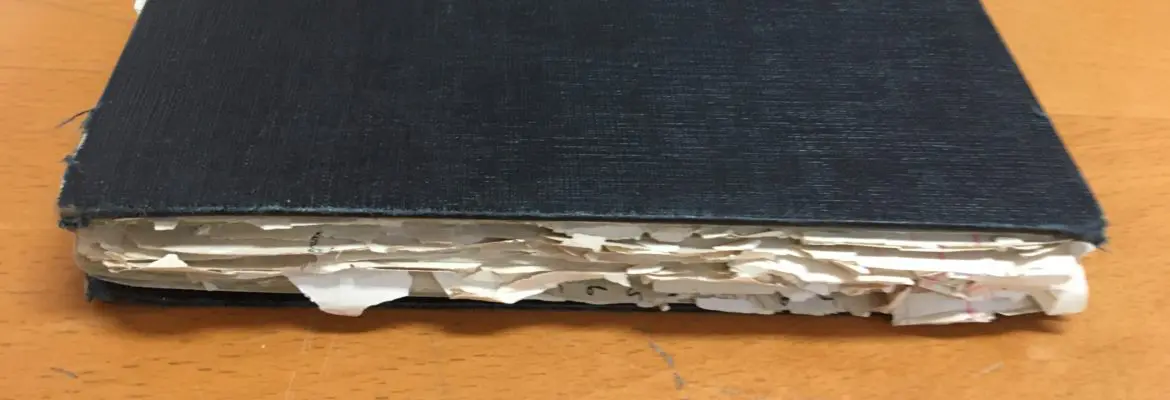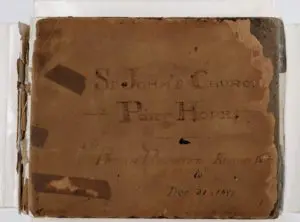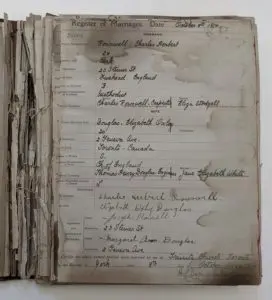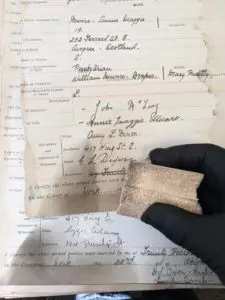
Conservation grant project update
In April 2022, the Diocese of Toronto Archives was awarded a $20,300 grant through the Library & Archives Canada, Documentary Heritage Communities Program (LAC DHCP) in order to complete conservation work on 25 of our parish registers showing significant deterioration. These registers contain vital records documenting baptisms, marriage and burials, of particular interest to genealogists researching their ancestors. This work will allow for continued access to these records without the risk of further damage or losing information due to pages flaking.
The conservator, Vincent Dion, has completed work on 20 of these registers and will complete the remaining five registers over the next three months. In determining what registers needed to have conservation treatments, we focused primarily on registers with brittle pages and broken bindings where the damage is obvious and restoration work would be needed to ensure the registers could continue to be accessed.
However, as we worked with the conservator in determining treatment needs, we learned that there are four stages to conservation: stabilization, cleaning, repair, and restoration.

Stabilization is the minimum level of treatment required to slow deterioration. This includes creating enclosures for individual registers to keep them from being bumped and potentially damaged when removing other material from a shared box. It may also be necessary to stabilize material such as leather. Several of the registers at the Archives have leather material wrapped over a rigid board rather than the typical heavy paper or leatherette. Many of these leather-covered registers show chemical degradation due to the tanning method used. The tanning agent reacts with pollutants in the air and accelerates the degradation of the leather, making it dry and powdery.


Cleaning may be necessary where there is dirt that could lead to the deterioration of paper, or which makes the text difficult to read. Dirt may include dust, mold and even soot. We have some registers received from a church that had a fire in 1961. While some records were destroyed, other registers escaped with soot and some water damage. With the use of a porous rubber sponge, commonly called a ‘smoke sponge’, it was possible to clean the soot from the pages.
Keep an eye out for the January edition of The Anglican to learn more about the repair and restoration of the registers that are receiving conservation treatments.
Along with learning about the stages and treatments of conservation, we have also learned the terms for various parts of a book, some of which can be confusing when you don’t know the terminology. When Vincent noted that signatures would be removed from the bindings, we became quite concerned, as the signatures of the individuals being married, and the priest who performed the marriage are very important components of the record! Upon seeing our confusion, Vincent explained that a “signature” in bookbinding is group of sheets folded in half, to be worked into the binding as a unit. These “signatures” (sections of pages) are removed in this grouping and kept together.

There are also interesting tools that the conservator uses, such as scalpels, brushes, sponges, special stable adhesives, Japanese paper and a heated spatula. A heated spatula is used by a conservator to remove tape and make repairs with heat-activated tissue. We are very grateful for the learning opportunities presented by having Vincent working with us on conservation!